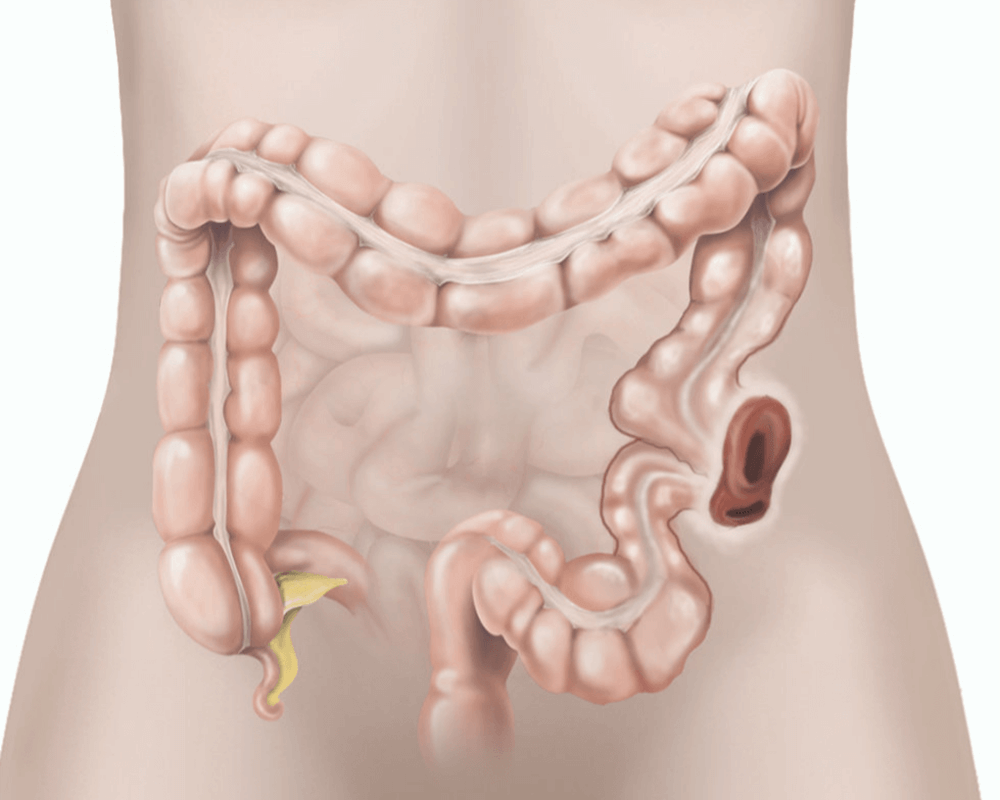
The word Ostium is derived from the Latin word “Ostium” meaning the entrance or opening. Intestinal ostomy is the surgical creation of an opening or entry between the intestinal tract and the skin, which is specifically named based on the main site of the fistula in the gastrointestinal tract.
Colostomies are performed on approximately one hundred thousand people in the United States who undergo surgery each year.
the high rate of ostomy in the United States is due to the increasing number of surgeries related to colorectal cancer (CRC) and diverticulitis.
What is the colostomy?
A colostomy is an incision in the abdomen (abdominal wall) that is made during surgery. A colostomy may only be needed for a short (temporary) period, perhaps 3 to 6 months. A temporary colostomy may be used when part of the large intestine needs to rest. But sometimes diseases like cancer are more serious and a colostomy might be required for the rest of a person's life (permanent).
The location of the colostomy on the abdomen varies depending on which part of the colon is involved. The stoma may look quite large at first but will reach its final size about 6 to 8 weeks after surgery. The shape of the ostomy will be round to oval. Some stomas may be slightly sticky and others may be flat on the skin.
Unlike the anus, the ostomy has no muscles or valves. This means that you will not be able to control the stool that passes through the ostomy, but sometimes bowel movements can be controlled in other ways. There is no nerve ending in the ostomy; therefore, the ostomy itself is not a source of pain or discomfort.
A colostomy changes the way your body works to pass stool. After a colostomy, the intestines work just like before, except for the large intestine. In a colostomy, the anus is no longer a way to pass stool; but it still pass mucus from time to time, which is normal.
Because nutrients are absorbed in the small intestine, a colostomy does not change how the body uses food. The main functions of the large intestine are to absorb water, move the stool towards the anus and then store the stool in the intestine until it’s passed out the body. When a colostomy redirects the stool, the stool storage area is no longer available.
The higher up in the colon the colostomy is made, the shorter the colon is. A shorter colon means that the colon has less time to absorb water, making the stool softer or more liquid.
Nutritional-medical treatment in colostomy
Nutritional recommendations after surgery for patients with colostomy include avoid eating until bowel function begins or stool or mucus pass out.
However, based on the evidence, oral or intravenous feeding can be started immediately after surgery for any type of obstruction that occurs during elective surgery.
The American Academy of Nutrition and the American Ostomy Institute recommend a low-fiber diet for approximately 6 weeks after surgery. The main reason for this recommendation is edema; as it increases the risk of injury or obstruction after surgery. Most patients return to a normal diet about 6 weeks after the surgery with a gradual increase in nutritional fiber.
Concerns about gas accumulation in the intestines and its bad odor are common in patients undergoing colostomy. Therefore, many patients limit theconsumption of foods that increase the likelihood of the intestinal gas accumulation or the fecal odor intensification.
The patient should find out from experience which foods affect the stool output. Deodorants are also available to patients . These ostomy supplies are made with deodorants; So that they have charcoal filters and drain and regenerate the gas.
The high output ostomy (HOS) is defined as an output of more than 2000 mm per day for 3 consecutive days, in which we expect fluid and electrolyte imbalance leading to dehydration and acute kidney injury.




